
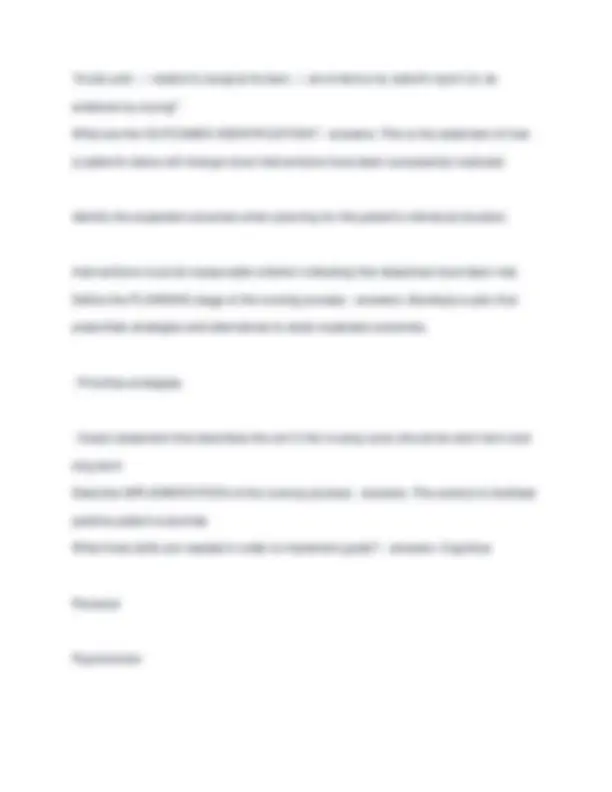
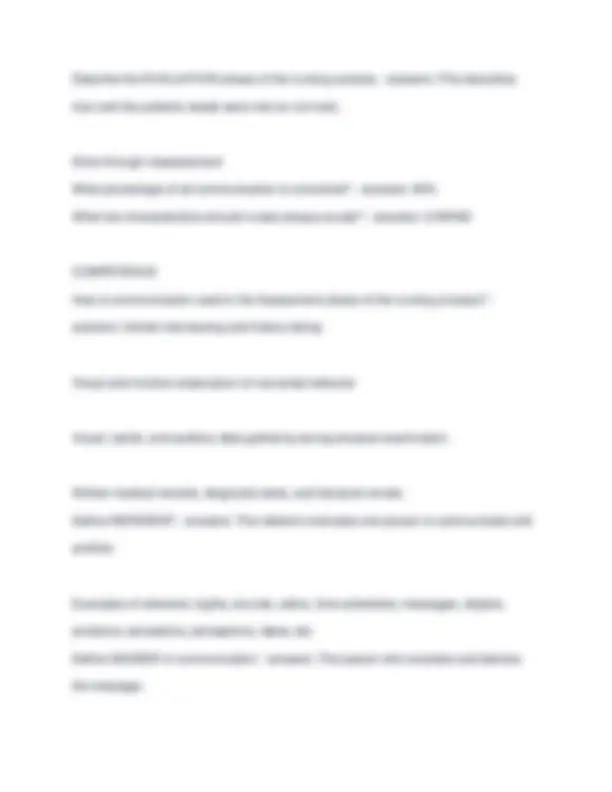
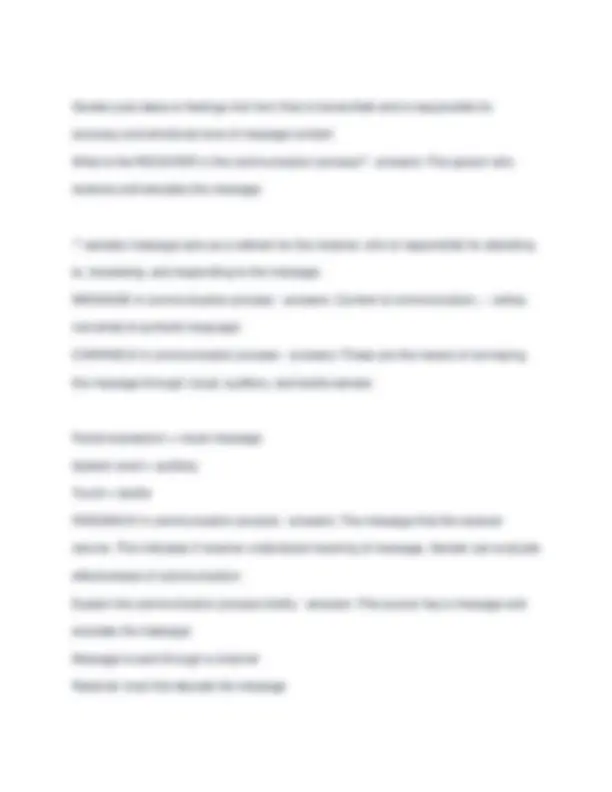
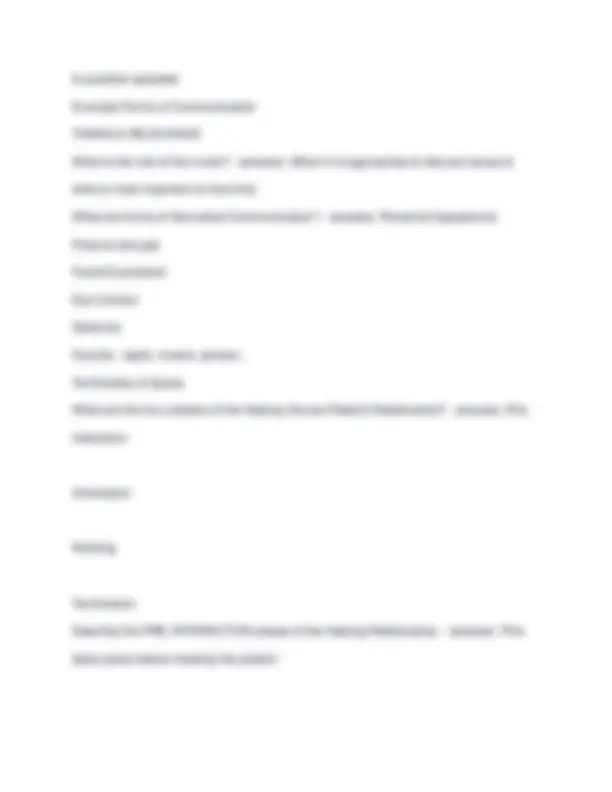
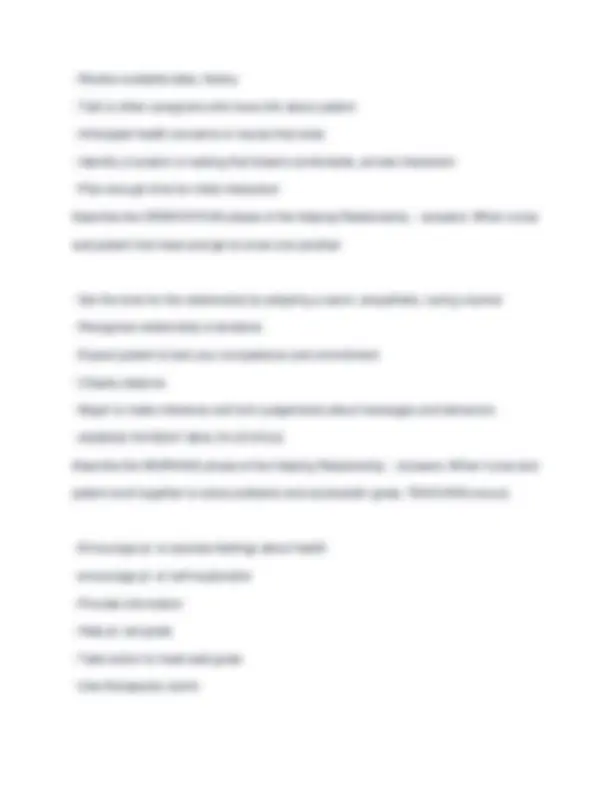
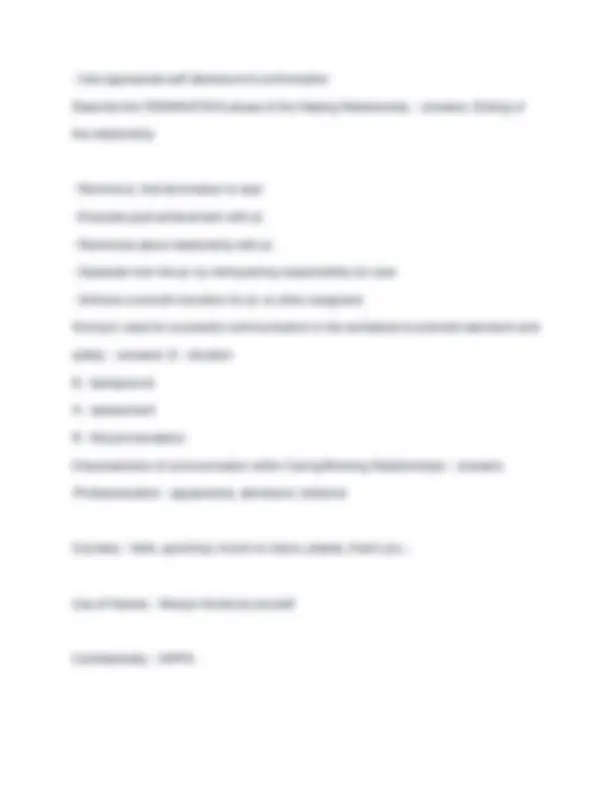
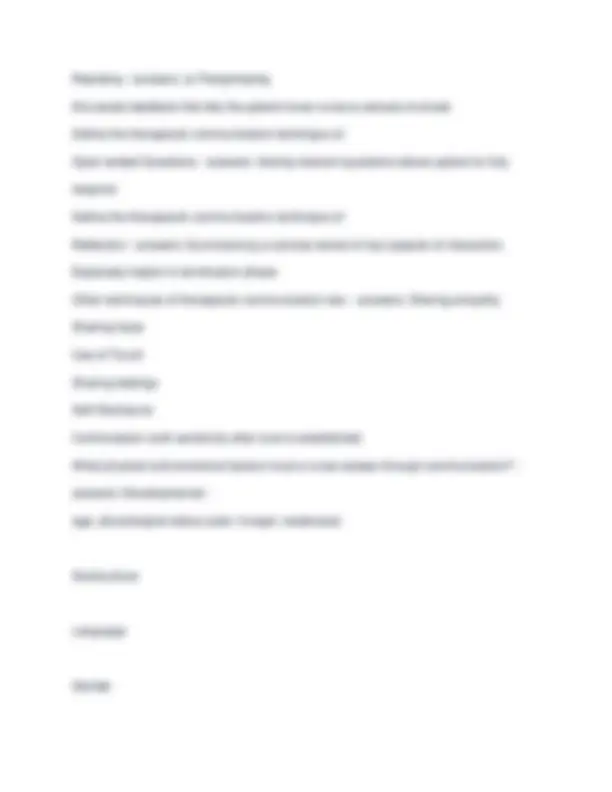
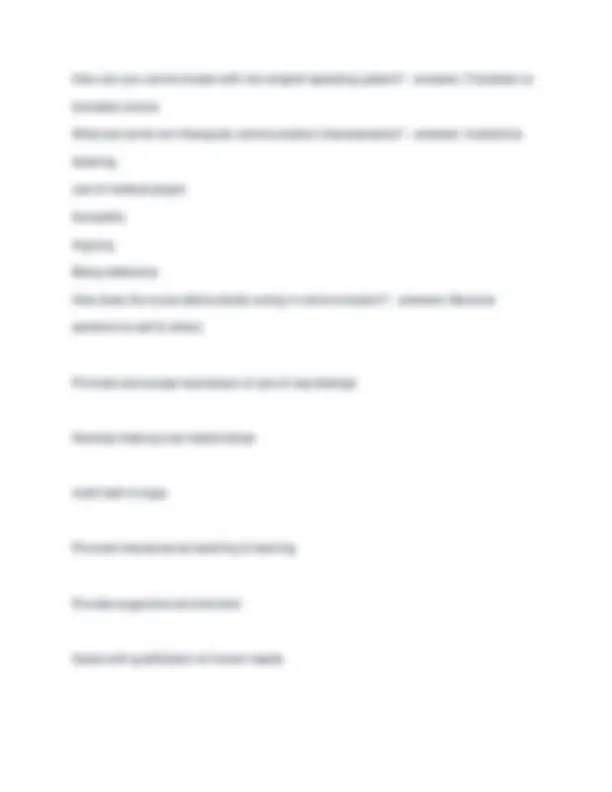

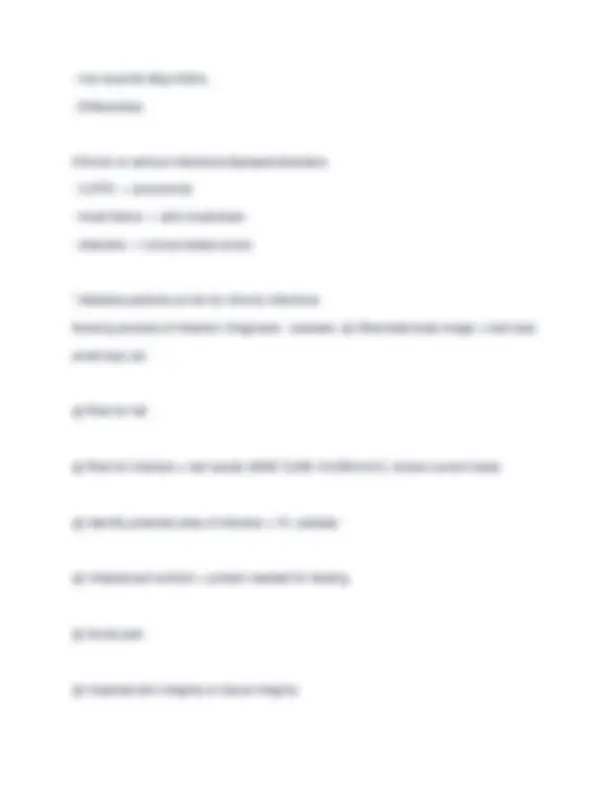
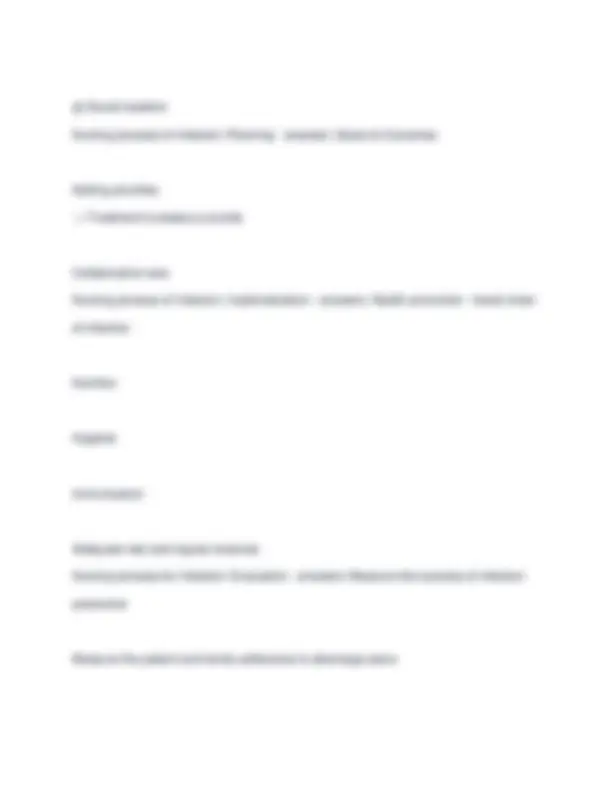
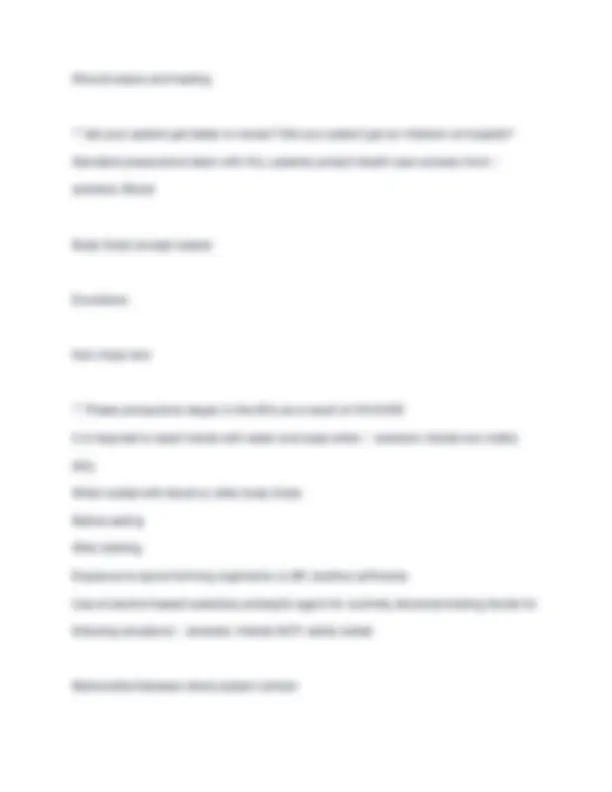
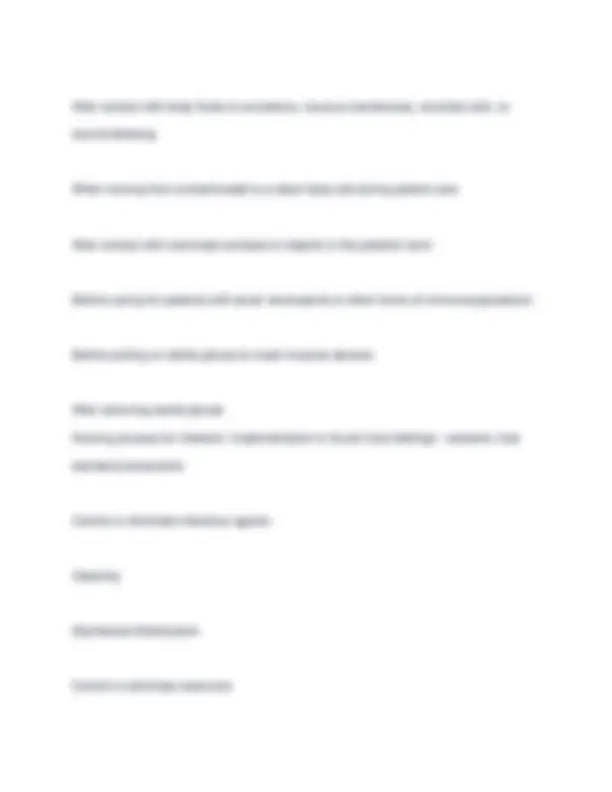

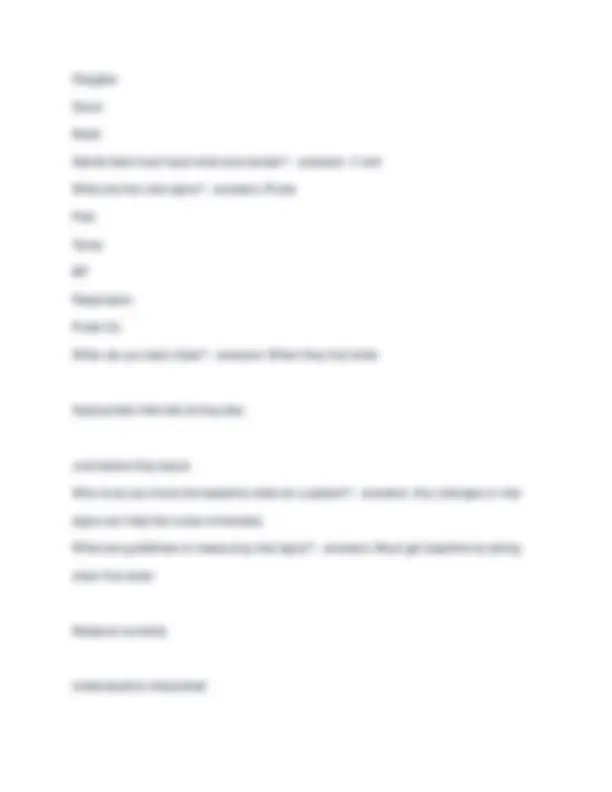
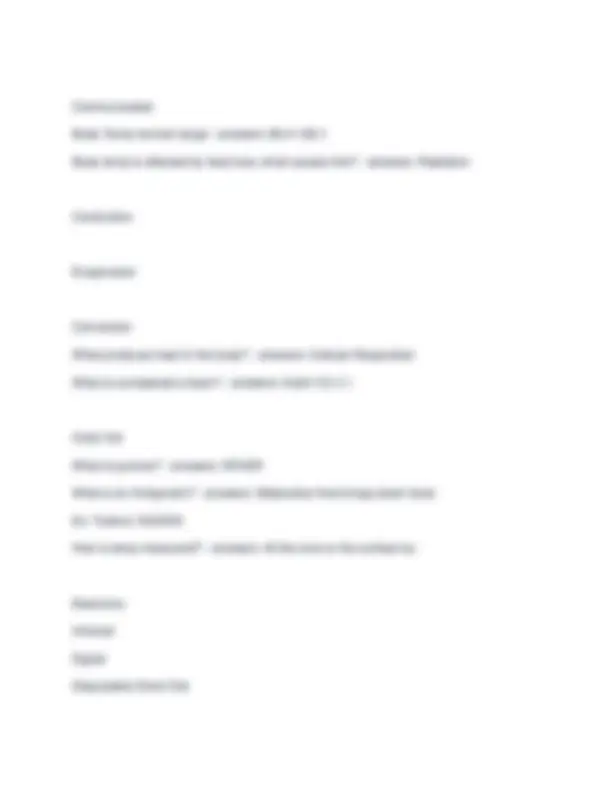
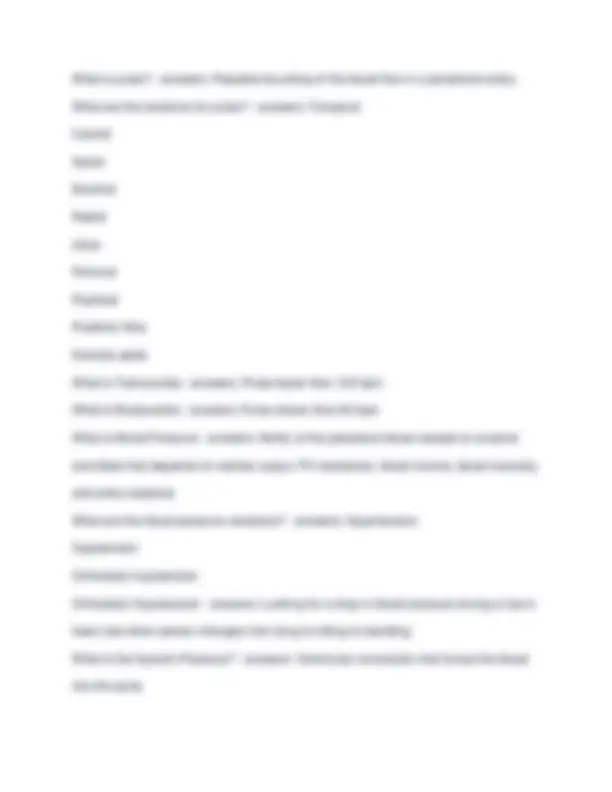
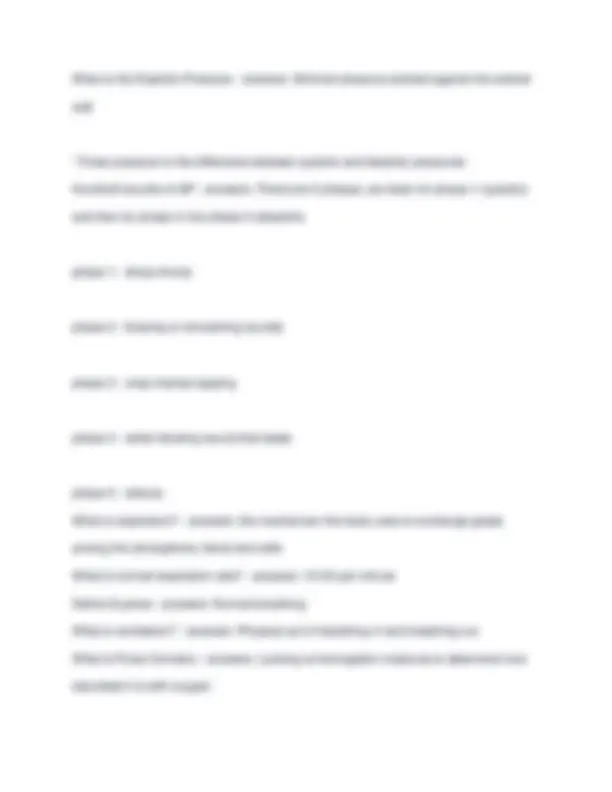


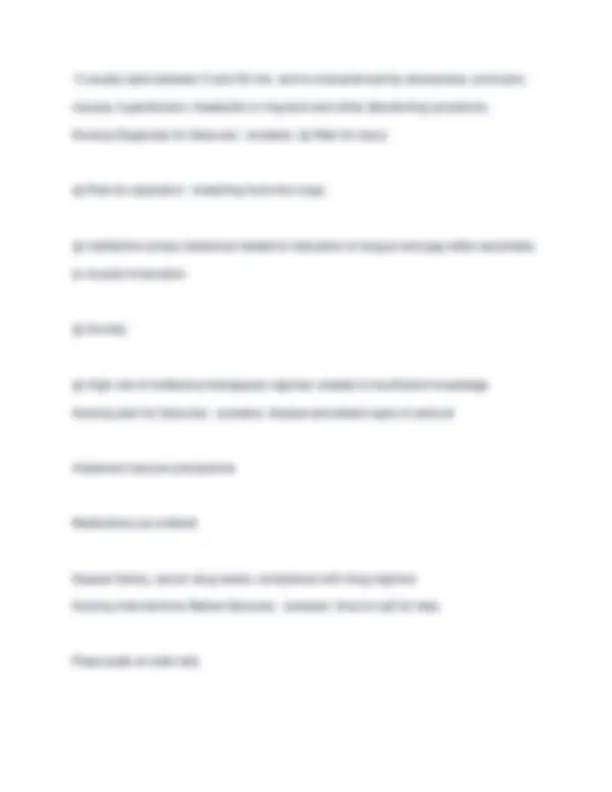


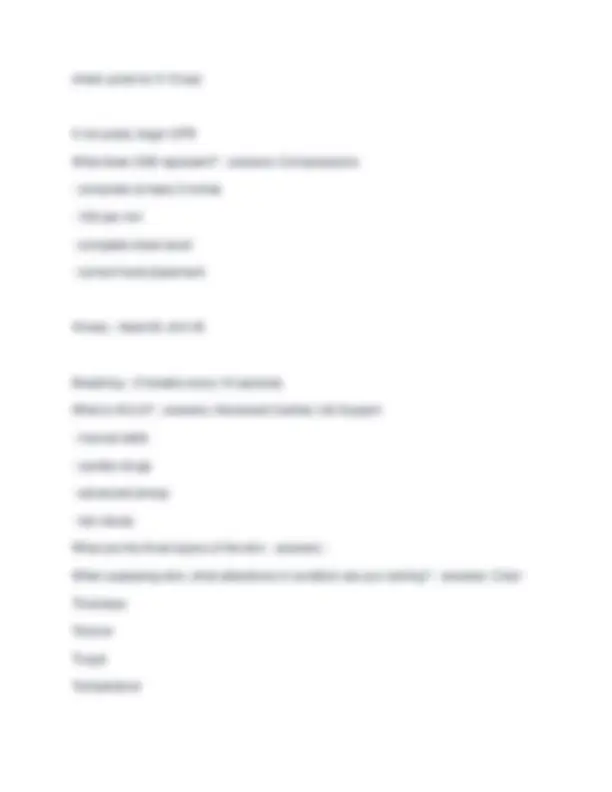

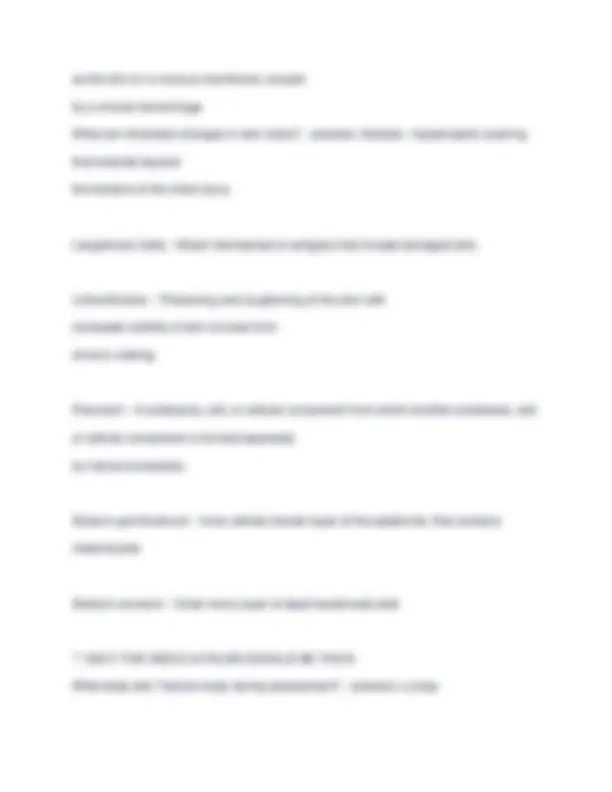
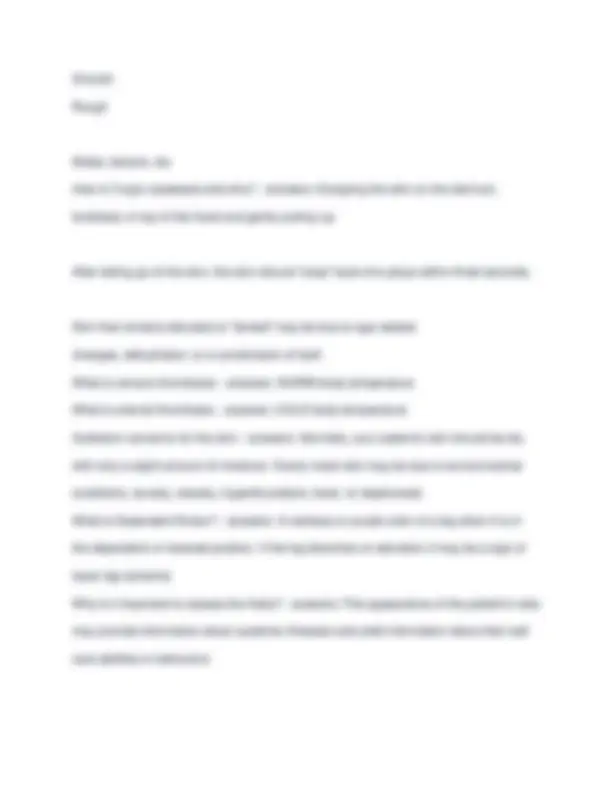
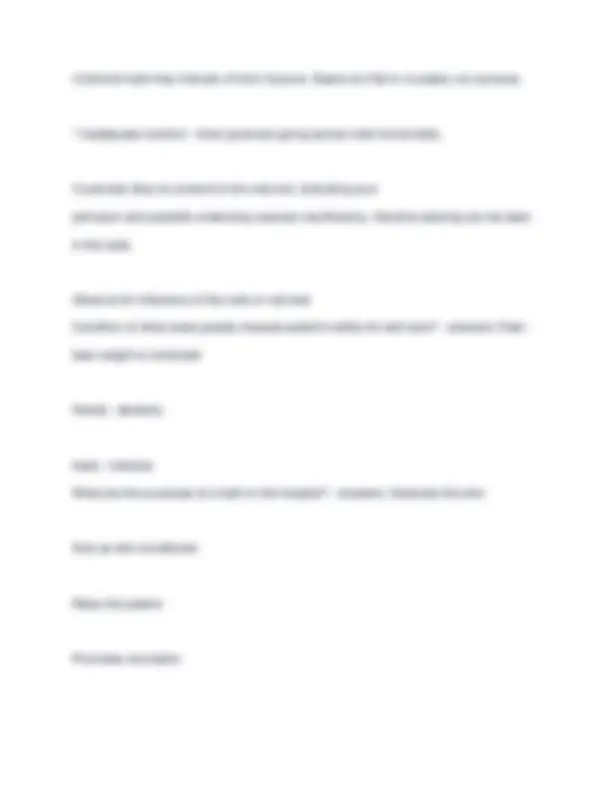
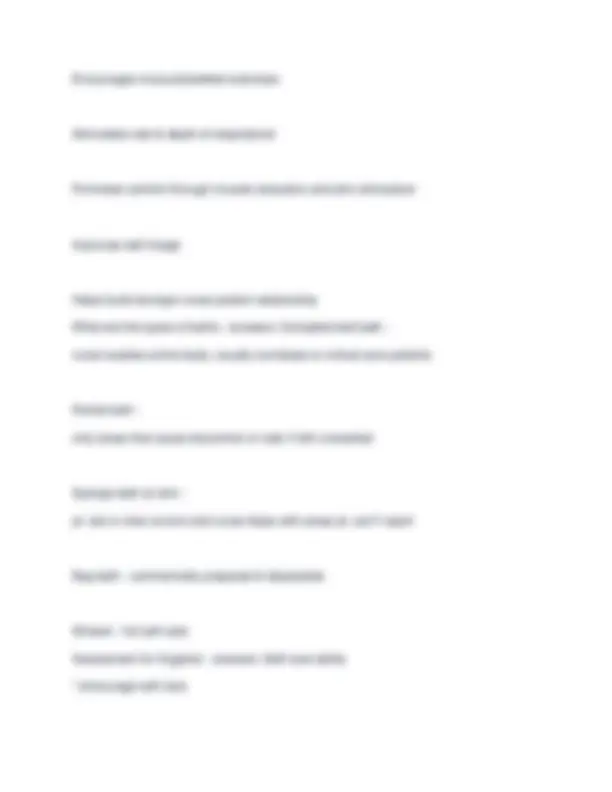
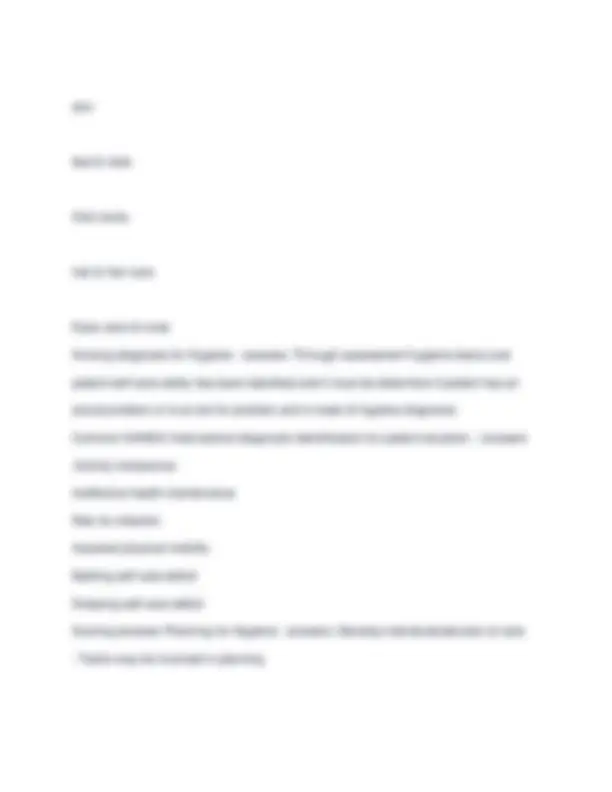
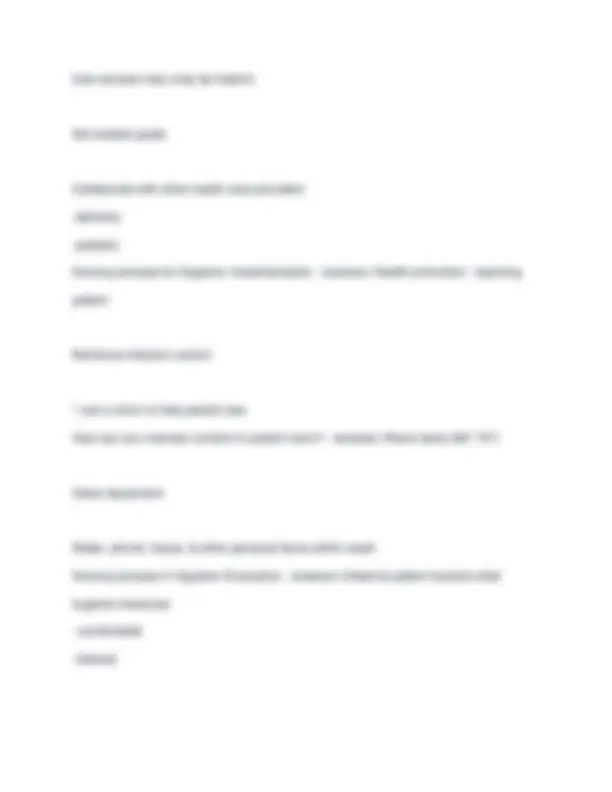
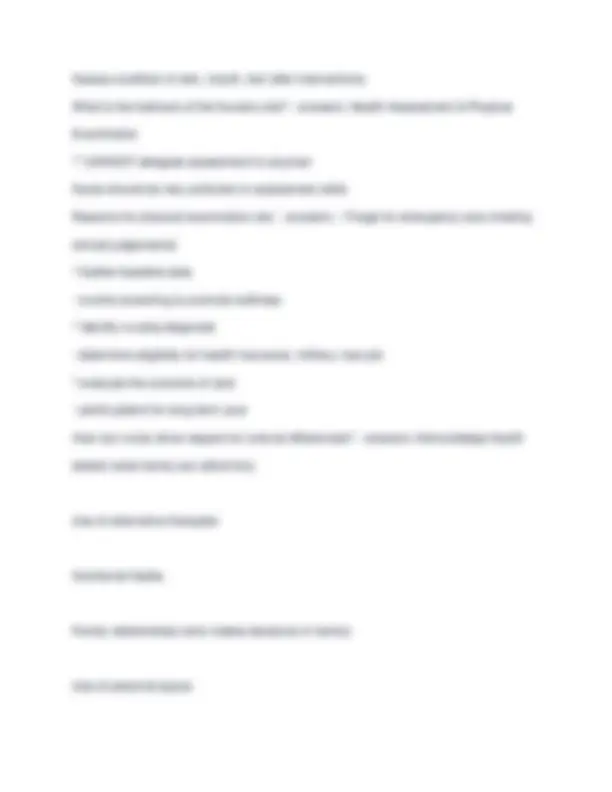
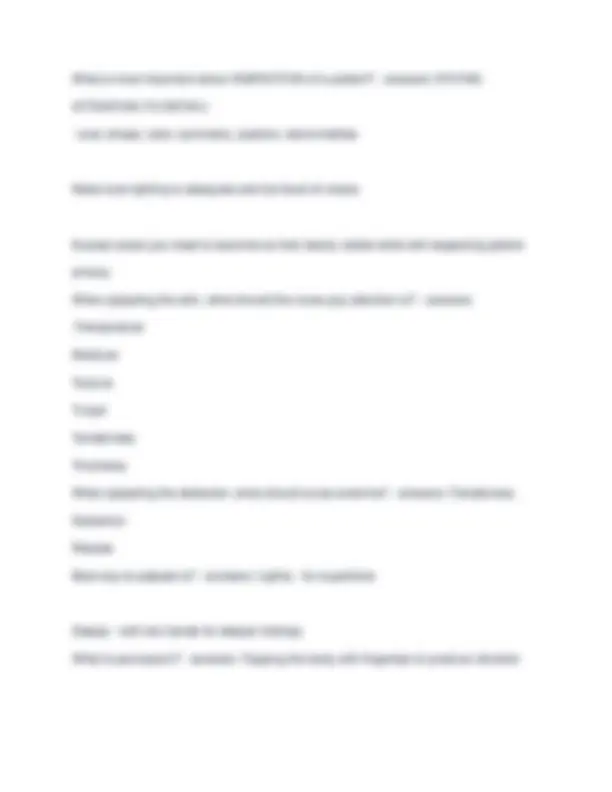
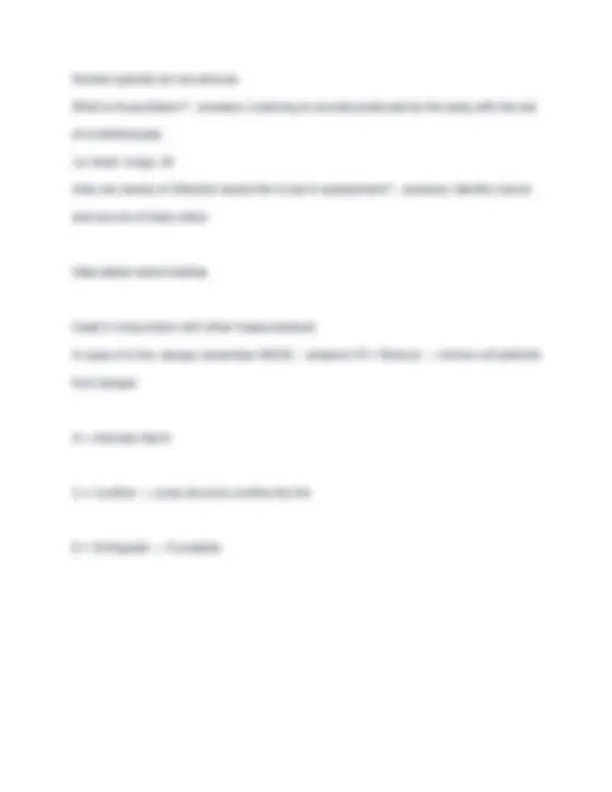


Study with the several resources on Docsity

Earn points by helping other students or get them with a premium plan


Prepare for your exams
Study with the several resources on Docsity

Earn points to download
Earn points by helping other students or get them with a premium plan
Community
Ask the community for help and clear up your study doubts
Discover the best universities in your country according to Docsity users
Free resources
Download our free guides on studying techniques, anxiety management strategies, and thesis advice from Docsity tutors
Fundamentals of Nursing Exam 1 (with answers), Exams of Nursing
Typology: Exams
1 / 42

This page cannot be seen from the preview
Don't miss anything!



































What are the most important roles of the nurse (5) - answers :Caregiver Advocate Educator Researcher Leader What are the 5 steps in the nursing process? - answers :(1) Assessment (2) Nursing Diagnosis (3) Planning (4) Implementation (5) Evaluation *** All of the above require critical thinking!
Define Assessment - answers :Collects comprehensive data pertinent to the patient's health and/or situation.
Describe the EVALUATION phase of the nursing process - answers :This describes how well the patients needs were met (or not met). Done through reassessment What percentage of all communication is nonverbal? - answers :90% What two characteristics should nurses always exude? - answers :CARING COMPETENCE How is communication used in the Assessment phase of the nursing process? - answers :Verbal interviewing and history taking Visual and intuitive observation of nonverbal behavior Visual, tactile, and auditory data gathering during physical examination. Written medical records, diagnostic tests, and literature review. Define REFERENT - answers :The referent motivates one person to communicate with another. Examples of referents: sights, sounds, odors, time schedules, messages, objects, emotions, sensations, perceptions, ideas, etc. Define SENDER in communication - answers :The person who encodes and delivers the message.
Sender puts ideas or feelings into form that is transmitted and is responsible for accuracy and emotional tone of message content What is the RECEIVER in the communication process? - answers :The person who receives and decodes the message ** senders message acts as a referent for the receiver, who is responsible for attending to, translating, and responding to the message. MESSAGE in communication process - answers :Content of communication.... verbal, nonverbal & symbolic language. CHANNELS in communication process - answers :These are the means of conveying the message through visual, auditory, and tactile senses. Facial expression = visual message Spoken word = auditory Touch = tactile FEEDBACK in communication process - answers :The message that the receiver returns. This indicates if receiver understood meaning of message. Sender can evaluate effectiveness of communication. Explain the communication process briefly - answers :The source has a message and encodes the message. Message is sent through a channel Receiver must first decode the message
Elements can work in harmony to enhance a message OR conflict with one another to confuse it. Example Forms of Communication VOCABULARY What is the role of the nurse? - answers :Nurse often the interpreter of medical terminology Example Forms of Communication DENOTATIVE AND CONNOTATIVE What is the role of the nurse? - answers :Denotative is the exact meaning Connotative is shades of the meaning Be selective in word choice and avoid easily misinterpreted words. Example Forms of Communication PACING What is the role of the nurse? - answers :Speak slowly and enunciate clearly! Too fast = unintended messages Too slow = impression of hiding the truth Example Forms of Communication INTONATION What is the role of the nurse? - answers :Tone of voice... be careful Example Forms of Communication CLARITY & BREVITY What is the role of the nurse? - answers :Simple - short - to the point
& possible repeated Example Forms of Communication TIMING & RELEVANCE What is the role of the nurse? - answers :When it is appropriate to discuss issues & what is most important at that time. What are forms of Nonverbal Communication? - answers :Personal Appearance Posture and gait Facial Expression Eye Contact Gestures Sounds - sighs, moans, groans... Territoriality & Space What are the four phases of the Helping (Nurse-Patient) Relationship? - answers :Pre- interaction Orientation Working Termination Describe the PRE-INTERACTION phase of the Helping Relationship. - answers :This takes place before meeting the patient:
Trust - always honest! Acceptance & Respect - Non-judgmental attitudes Availability - "Anything else I can get you? Socializing - don't socialize with pt. and don't socialize with colleagues where pt's can hear What is therapeutic communication techniques? - answers :Specific responses that encourage the expression of feeling and ideas and convey acceptance and respect. Define the therapeutic communication technique of: Active Listening - answers :Being attentive to what patient is saying both verbally and nonverbally. ** Use SOLER to facilitate attentive listening Define acronym SOLER - answers :S - Sit facing the patient O - Open posture L - Lean toward the patient E - Establish & maintain eye contact
Restating - answers :or Paraphrasing this sends feedback that lets the patient know nurse is actively involved Define the therapeutic communication technique of: Open-ended Questions - answers :Asking relevant questions allows patient to fully respond Define the therapeutic communication technique of: Reflection - answers :Summarizing a concise review of key aspects of interaction. Especially helpful in termination phase Other techniques of therapeutic communication are: - answers :Sharing empathy Sharing hope Use of Touch Sharing feelings Self-Disclosure Confrontation (with sensitivity after trust is established) What physical and emotional factors must a nurse assess through communication? - answers :Developmental - age, physiological status (pain, hunger, weakness) Socioculture Language Gender
How can you communicate with non-english speaking patient? - answers :Translator or translator phone What are some non-theraputic communication characteristics? - answers :Inattentive listening use of medical jargon Sympathy Arguing Being defensive How does the nurse demonstrate caring in communication? - answers :Become sensitive to self & others Promote and accept expression of pos & neg feelings Develop helping trust relationships Instill faith & hope Promote interpersonal teaching & learning Provide supportive environment Assist with gratification of human needs
Social - 4 - 12 ft Public - > 12 ft What is Intimate zone of personal space? - answers :Holding crying infant Performing physical assessment Bathing, grooming, dressing, feeding, and toileting a patient Changing patient dressing What is Personal Zone of personal space? - answers :Sitting at a patient's bedside Taking patient history Teaching patient Exchanging info at shift change What is Social Zone of personal space? - answers :Making rounds with physician Sitting at the head of a conference table Teaching a class for patients with diabetes
Conducting family support What is public zone of personal space? - answers :Speaking at a community forum Testifying at a legislative hearing Lecturing to a class of students INFECTION PHYSIOLOGY....... - answers :SEE NOTECARDS FOR MED-SURG EXAM, PART ONE to review vocabulary and basic understanding. THEN... proceed in this set of flashcards for the Nursing Care of Infections Nursing process for Infection: Assessment - answers :Assess all risk factors: age, nutrition, diagnostic procedures (IV, catheters), occupation, high-risk behaviors, travel history, trauma, stress Nutritional Status
⊗ Social isolation Nursing process of Infection: Planning - answers :Goals & Outcomes Setting priorities → Treatment is always a priority Collaborative care Nursing process of Infection: Implementation - answers :Health promotion - break chain of infection Nutrition Hygiene Immunization Adequate rest and regular exercise Nursing process for Infection: Evaluation - answers :Measure the success of infection prevention Measure the patient and family adherence to discharge plans
Wound status and healing ** did your patient get better or worse? Did your patient get an infection at hospital? Standard precautions taken with ALL patients protect health care workers from: - answers :Blood Body fluids (except sweat) Excretions Non-intact skin ** These precautions began in the 80's as a result of HIV/AIDS It is required to wash hands with water and soap when: - answers :Hands are visibly dirty When soiled with blood or other body fluids Before eating After toileting Exposure to spore-forming organisms (c-diff, bacillus anthracis) Use of alcohol-based waterless antiseptic agent for routinely decontaminating hands for following situations: - answers :Hands NOT visibly soiled Before/after/between direct patient contact